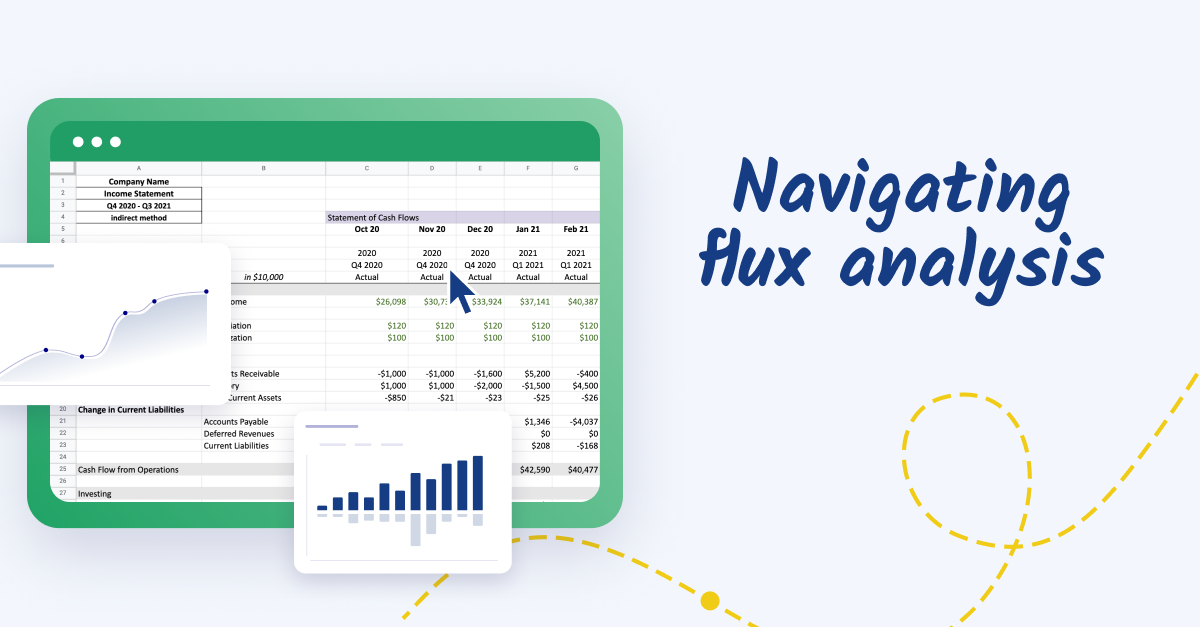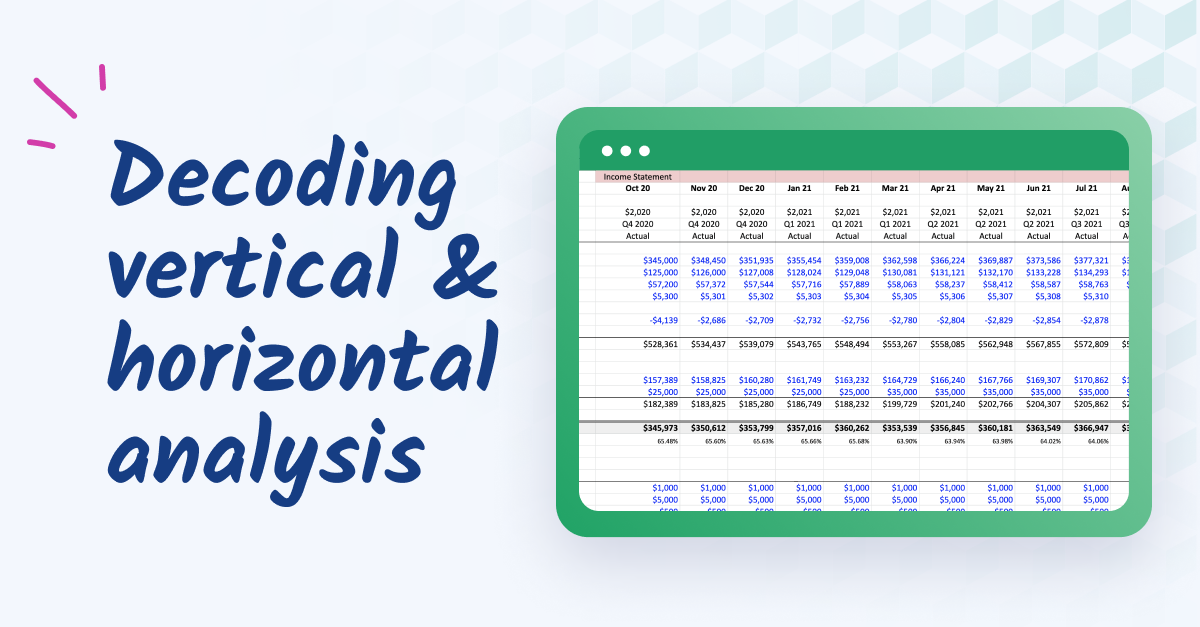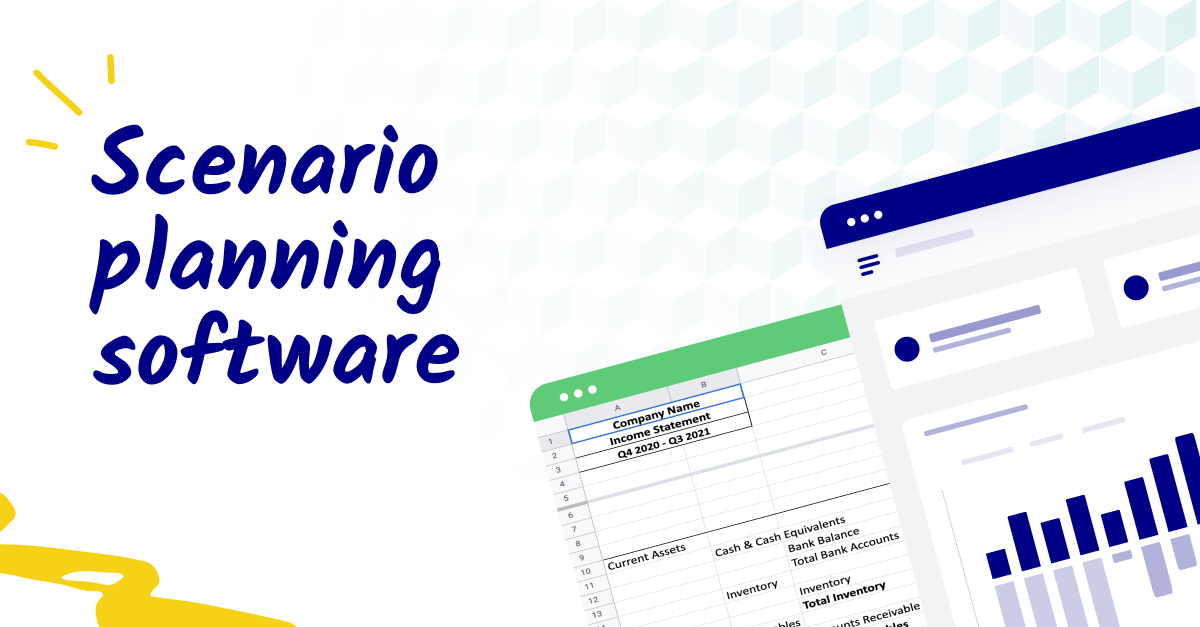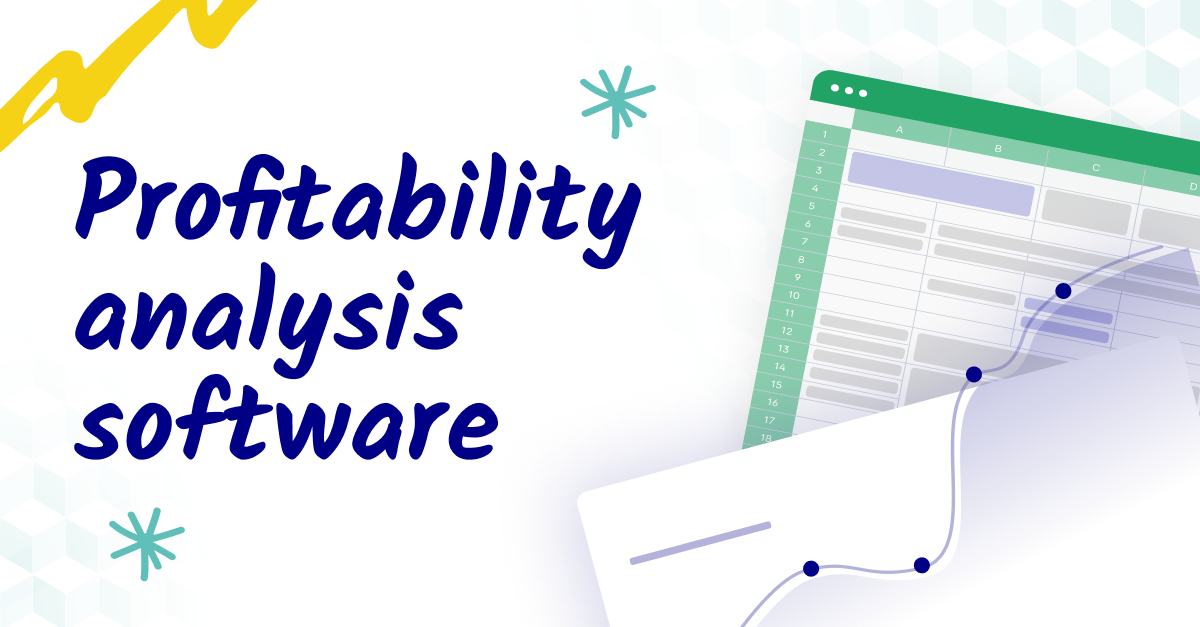Understanding flux analysis
Flux analysis, in the world of financial management, is like having a high-powered microscope for your business's finances. It's all about diving deep into your financial statements to spot where the numbers have shifted significantly over a period—be it revenues, expenses, or assets. This method is especially handy for finance and FP&A leaders looking to pinpoint the 'why' behind these changes, ensuring that every variance is accounted for and understood.
The main goal of flux analysis is not just to identify these changes but to provide actionable insights. It helps in diagnosing the health of a business, spotting trends that might require immediate action or signal opportunities for growth. Whether it's a surprising jump in sales or an unexpected dip in expenses, flux analysis brings these to the forefront, helping leaders make informed decisions.
What sets flux analysis apart from other financial analysis methods is its focus on change over time. While other analyses might give you a snapshot or a broad overview of financial health, flux analysis digs into the dynamics of financial performance, offering a clear view of progress or regression. It's this detailed tracking and explanation of changes that empower leaders to steer their SMBs with confidence and precision.

Why is flux analysis crucial for SMBs?
SMBs face their own set of financial challenges, from limited resources to navigating the unpredictable waves of market trends and consumer behavior. These challenges make it essential for SMBs to have a keen eye on their financial health, and that's exactly where flux analysis comes into play. By identifying significant changes in financial statements, flux analysis acts as an early warning system, alerting businesses to shifts that could impact their operations or financial standing.
This analytical tool goes beyond merely spotting changes. It helps SMBs understand the undercurrents driving those changes. Whether it's an unexpected rise in sales or a gradual increase in overhead costs, flux analysis decodes the story behind the numbers. This deep dive into the finances allows businesses to pinpoint areas of concern or opportunity, making it a cornerstone of strategic planning and decision-making.
Incorporating flux analysis into the regular review process equips SMBs with the insights needed to pivot quickly, seize opportunities, and mitigate risks. It's not just about survival, but thriving in a competitive landscape by making data-driven decisions that align with long-term goals and objectives. Flux analysis, therefore, is a strategic ally for SMBs aiming for growth and stability.
How to implement flux analysis in your SMB
Implementing flux analysis allows businesses to stay agile, make informed decisions, and maintain a competitive edge. Let’s walk through the steps to integrate flux analysis into your SMB, ensuring that it informs your financial strategy and becomes a pillar of your organizational culture.
Step 1: Identify key metrics and benchmarks
Kicking off flux analysis in your SMB starts with zeroing in on the right metrics and benchmarks. It's about figuring out which numbers truly reflect the health and direction of your business—be it revenue growth, cost management, or asset utilization. These metrics will act as your north star, guiding the analysis and ensuring it aligns with your business objectives.
Step 2: Integrate flux analysis into financial review routines
Once you've pinpointed these key indicators, the next step is weaving flux analysis into your regular financial review routines. This could mean setting aside time each month or quarter to dive into the changes, using software that automates part of this process, or even holding dedicated sessions with your team to discuss the findings. The goal is to make this analysis a regular beat in the rhythm of your financial management, not just a one-off exercise.
Step 3: Embed flux analysis into organizational culture
For finance and FP&A leaders, making flux analysis an integral part of your organizational culture is crucial. This means championing its importance at every level, from the top executives to the operational teams. Share insights gained from the analysis widely, celebrate wins when strategic shifts lead to positive outcomes, and use setbacks as learning opportunities.
Encouraging openness to change based on flux analysis findings fosters a culture of agility and continuous improvement, turning financial insights into actionable strategies that propel the business forward.
Leveraging technology for effective flux analysis
In finance, the right tools can make all the difference. That's where financial planning and analysis (FP&A) software comes into play, especially when it comes to flux analysis. This type of software is tailor-made to sift through your financial data, identifying and analyzing any significant changes over time. It's like having a financial detective at your disposal, one that's incredibly good at spotting the clues hidden in your numbers.
The benefits of automating flux analysis with FP&A software
-
Boosted accuracy: FP&A software brings a level of accuracy that manual processes can't match. Human error is a real thing, and even the most meticulous among us can make mistakes with numbers. FP&A software minimizes these errors, ensuring that the insights you draw from your analysis are reliable.
-
Greater efficiency: Efficiency is another major plus. What used to take hours, if not days, of manual labor can now be accomplished in a fraction of the time. This means you can spend less time crunching numbers and more time strategizing based on the insights those numbers reveal.
-
Increased agility: Perhaps one of the most significant advantages of using technology for flux analysis is its ability to track and report financial changes over time systematically. With FP&A software, you're not just looking at a static snapshot of your finances. Instead, you're getting a dynamic, ongoing story of your business's financial health. This continuous monitoring allows for real-time adjustments to your financial strategy, helping you stay agile in a constantly changing business landscape.
In essence, leveraging FP&A software for flux analysis empowers businesses to not only understand their past and present financial states but also to anticipate future trends. This foresight is invaluable for making informed decisions that drive growth and stability.
Check out our Ultimate guide to FP&A software for a deep-dive into the hottest technology on the market today.
Overcoming challenges: best practices for flux analysis in SMBs
Integrating flux analysis into financial strategies can pose several challenges. However, with every challenge comes a solution. By addressing these obstacles head-on, you can unlock the full potential of flux analysis to drive your financial decision-making.
Some of the biggest challenges you may face include:
1. Steep learning curve
Understanding flux analysis involves getting to grips with new financial concepts and software, which can be overwhelming, especially for teams without a financial analysis background.
To address this, break down the learning process into manageable steps. Offer regular training sessions, and encourage the use of online courses and software tutorials. Building competency gradually can demystify flux analysis and make it accessible.
2. Workflow disruption
Integrating flux analysis into existing financial processes can initially disrupt day-to-day operations. Team members may resist changes to their routine, particularly if the benefits of flux analysis are not immediately clear.
Start small by incorporating flux analysis into a single aspect of your financial review process. This allows teams to adjust to the new workflow gradually. Communicate the long-term benefits of flux analysis clearly and frequently to encourage buy-in.
3. Data quality and availability
Effective flux analysis requires access to accurate and comprehensive financial data. SMBs might struggle with collecting, organizing, and maintaining this data, especially if existing data management systems are lacking.
Invest in data management tools that can help automate data collection and ensure its accuracy. Regular audits of data quality and completeness can also help maintain the integrity of the flux analysis process.
4. Resource constraints
SMBs often operate with limited resources, both in terms of budget and manpower. Allocating additional resources to implement flux analysis can be challenging.
Try leveraging cost-effective FP&A software that offers flux analysis features. Many solutions (like Cube) are designed with SMBs in mind, offering scalable pricing models.
5. Keeping up with technological advancements
The rapid pace of change in financial software can make it difficult for SMBs to choose the right tools for flux analysis and to stay updated with the latest features.
Focus on FP&A software that provides comprehensive support and training materials. Subscribe to industry newsletters, and participate in online forums and webinars to stay informed about new technologies and best practices in flux analysis.
By proactively addressing these challenges with targeted solutions, you can successfully integrate flux analysis into your FP&A.
Conclusion: figuring out flux analysis
Embracing flux analysis means you can make smarter, data-driven decisions that keep your business nimble and ahead of the curve. By following the tips outlined in this blog, you're one step closer to gaining a clearer picture of your financial health and making smarter, more strategic business decisions.
Want to learn how Cube can help make this process simpler, faster, and more efficient? Request a free demo today.



.png)









